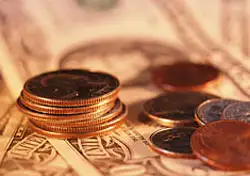
Travel loyalty programs are money-makers.
I’m not referring to the extra airline tickets or hotel nights purchased by consumers in response to the programs’ “loyalty effect.” That’s hard to measure. And in any case, it may not be the programs’ most significant contribution to the bottom line.
Fully developed programs earn significant revenues from the sale of frequent flyer miles to the hundreds of companies that award miles to consumers who buy their products or services. American, as an example, boasts more than 1,000 program partners in its AAdvantage program, including online retailers, mortgage companies, rental car companies, and other airlines. Each time an AAdvantage member earns miles for shopping at Gap.com, or renting a car from Avis, those companies must purchase the miles from American, at prices averaging around 1.5 to 2 cents per mile.
It adds up.
U.S. airlines generally don’t report their loyalty program revenues and expenses separately, choosing instead to fold those numbers into aggregate performance data. But industry-watchers have a pretty good sense of the programs’ revenues, based on a combination of forensic accounting and informed inference.
Last week, in a phone conversation with Robert Sahadevan, Vice President of United’s Mileage Plus program, I reality-checked my own assumption that United generated around $1 billion annually from the sale of frequent flyer miles. Without divulging any specifics, he acknowledged that I was “in the ballpark.”
Delta and American’s programs are of similar scale to United’s, so their revenues would be roughly comparable.
On the cost side, what is commonly assumed to be the programs’ greatest expense—those millions of free tickets issued to members redeeming their miles—amount to very little cost at all. When giving away empty seats, the only expense is the direct cost of flying one additional passenger: a little extra jet fuel, a Coke, and a bag of pretzels—perhaps $15 for a ticket with a perceived value of $400 or so. That’s the whole point of restricted awards—they can be given away at very modest cost to the airline, because they’re seats that would have been unsold.
Bottom line: These programs are very profitable endeavors. Moreover, they’re critical to the airlines’ financial health, especially when their core business is running in the red.
During the airlines’ darkest days, post 9/11, the sale of frequent flyer miles was the only profitable business unit of many large airlines, giving rise to the darkly humorous observation that the tail was wagging the dog: The airlines were operating flights at a loss so that they could continue operating their profitable loyalty programs. Albeit to a lesser extent, the same has been true during the recent recession.
As a current and quantified example, Australian carrier Qantas just reported that its frequent flyer program, Frequent Flyer, returned a pre-tax profit of $270 million during the past year, playing a major role in keeping the airline flying profitably.
And It Matters Because …
Viewing the programs in this light is not just an academic exercise—it has ramifications for both airline managers and for travel consumers.
For example, it has long been an article of faith among airline executives that their primary target market was frequent flyers—hence “frequent flyer programs”—and in particular those flying on their own airlines. That precept is enshrined in the qualification requirements of elite programs, most of which award elevated status exclusively for miles earned by flying.
But as the sale of miles to partner companies has burgeoned into a big business unto itself, the definition of a loyal airline customer has changed. Because it turns out that consumers who earn miles for buying khakis at Gap.com or renting a Pontiac from Avis are contributing to an airline’s profitability just as surely as a true frequent flyer.
This shift has yet to be fully understood, much less reflected in the way loyalty programs are structured and managed.
Eventually, airlines will have to do more to recognize the loyalty of non-flyers. Because in the end, it’s a buyer’s market.
We hand-pick everything we recommend and select items through testing and reviews. Some products are sent to us free of charge with no incentive to offer a favorable review. We offer our unbiased opinions and do not accept compensation to review products. All items are in stock and prices are accurate at the time of publication. If you buy something through our links, we may earn a commission.
Related
Top Fares From
Today's Top Travel Deals
Brought to you by ShermansTravel
Porto to Lisbon: 7-Nt, Small-Group Portugal...
Indus Travels
 vacation
$1899+
vacation
$1899+
Greenland: Luxe, All-Incl. 11-Nt Exploration Small-Ship...
Swan Hellenic



Ohio: Daily Car Rentals from Cincinnati
85OFF.com





